- Angular 8 Tutorial
- AngularJS CDN Integration
- AngularJs vs Angular Versions - A Definitive Guide
- Understanding AngularJS: Factory vs Service
- AngularJS Interview Questions and Answers
- AngularJS Tutorial
- AngularJS vs Bootstrap: What Is The Difference?
- AngularJS vs Node JS
- How Will AngularJS Make A Difference In Your Career?
- React JS vs Angular JS
- Myths Of AngularJS Unleashed
- Six Figure Pay With AngularJS Certification
- What is Angular CLI ?
- What is AngularJS? - Getting started with AngularJS
- What Led To The Popularity Of AngularJS?
- Why Should You Consider A Career Shift To AngularJS?
- Why Should You Use AngularJS?
- Protractor Interview Questions and Answers
- Vue vs Angular
- Thymeleaf vs Angular
- Angular JS Projects and Use Cases
- How to Install Angular?
- Angular Projects and Use Cases
Symfony was first launched in October 2005. It is an open-source and back-end web app framework that is a collection of reusable PHP libraries. In fact, it is one of the topmost PHP frameworks mostly used for building microservices, web apps, APIs, and websites. A simple toolkit is provided for the same to developers by Symfony. The MVC (Model View Controller) design pattern is followed by Symfony.
This overview was just as important as would be the following questions. And it could be asked as an Symfony interview question as well.
Let's browse through the following insightful facts about Symfony -
- Symfony has a market share of around 1%. Germany is the major hot spot of Symfony using companies.
- PHP programming language is used by 79% of the total world's websites these days. And Symfony holds a major chunk of the volume.
- A Symfony Developer can earn an average income of $47 per hour or $97,630 per annum in the United States.
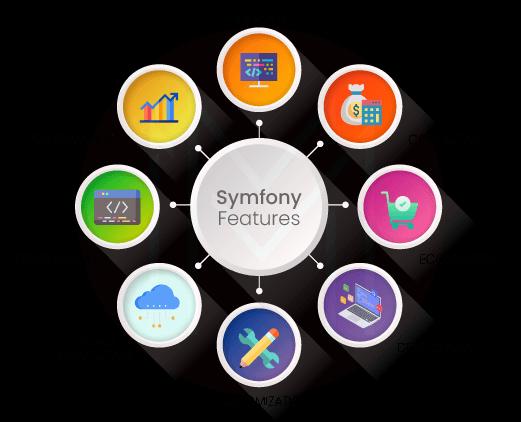
We have categorized Symfony Interview Questions - 2024 (Updated) into 3 levels they are:
Top 10 Frequently Asked Symfony Interview Questions
- What is the use of flashbacks?
- What are the server requirements to install Symfony?
- How to create a request object in Symfony?
- Which cache adapters are available in Symfony?
- How to get the current route in Symfony?
- What additions are there in Symfony 2.0?
- What is the Email Type syntax in Symfony?
- What is the syntax for checking a valid email address?
- In Symfony, is the directory structure of bundles fixed?
- What are the web servers supported by Symfony?
| If you want to enrich your career and become a professional in Web Development, then enroll in "AngularJS Training". This course will help you to achieve excellence in this domain. |
Symfony Interview Questions and Answers For Freshers
1. What is Serializer in Symfony?
You can convert a PHP object into a specific format such as JSON, XML, Binary, etc., using the Serializer component in Symfony.
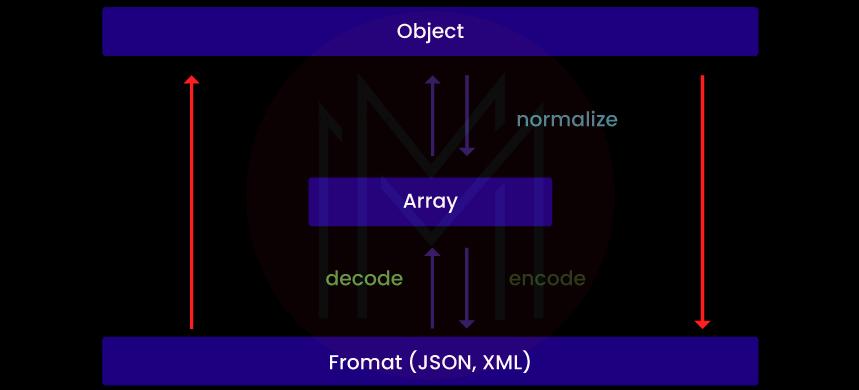
2. How to clear cache in Symfony?
To clear the cache in Symfony, you can use the command - "cache:pool:clear."
This command will help you delete all the data from the project storage directory. Symfony has three default cache clearers, and they are as follows:
- global_clearer
- system_clearer
- app_clearer.
3. What is the use of flashbacks?
During the page redirections, FlashBag is used to hold the data.
4. In Symfony, what is meant by Annotations?
In the Symfony framework, Annotations are used to map doctrine details as well as configure validation. They are easily usable. There are two additional bundles also - JMSSecurityExtraBundle and SensioFrameworkExtraBundle in Symfony's standard edition. Better annotation support is provided by them. Annotations for cache, template, routing, controller configuration, security, etc., can be used with the help of these bundles.
5. What is meant by a Controller in Symfony?
Symfony controller is a class method. The information is obtained from the request of HTTP for constructing and returning a response in HTTP by this controller. Distinct responses could be there, such as a 404 error, an HTML page, a JSON array (serialized), an XML file, a redirect, etc.
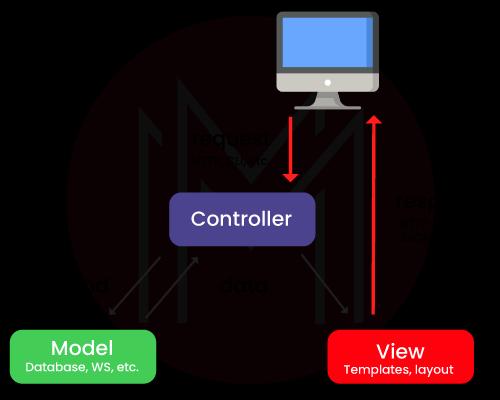
6. Is Symfony used by Laravel?
Around 30% of the Laravel framework uses Symfony components internally. So yes, Laravel is built on Symfony.
7. What is an environment in Symfony?
In Symfony, an environment contains the configurations used for running an app. Two default environments in Symfony are as follows:
- Prod: You can use it for optimizing an app's execution.
- Dev: You can use it for developing an app locally.
8. What are the server requirements to install Symfony?
To install and run the Symfony framework, your server will require the following requirements:
- PHP 5.5.9 or greater
- Composer
- JSON enabled
- ctype enabled
- Timezone should be set (the default timezone won't work).
9. What tasks does the Symfony controller perform?
A controller in Symfony is capable of doing anything virtually inside the Symfony framework. A controller in Symfony can be used for various tasks such as forward, redirect, and access core services as well as render templates.
10. How many kinds of bundles are there in Symfony?
There are two kinds of bundles available in the Symfony framework:
- Reusable bundles: It is meant to be shared across many projects.
- Application-specific bundles: It is only used to build your application.
[ Check out JavaScript Frameworks ]
11. How to create a request object in Symfony?
In Symfony, the createFromGlobals() method is used to create a request object.
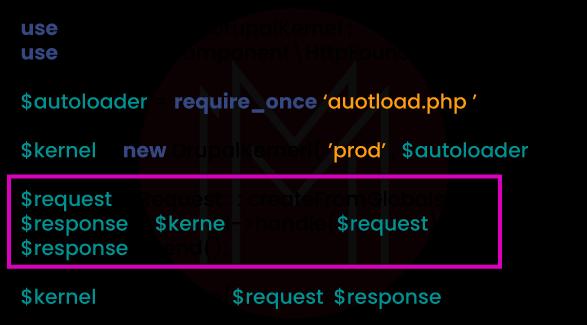
12. What is Twig in Symfony?
Sandboxing, whitespace controlling, and automatic HTML escaping are the functions performed by Twig. It is a powerful templating language of Symfony.
13. What do you mean by Symfony 2.0?
Symfony 2.0 is a PHP-written web framework that is full-stack. Web development problems are solved by this reusable collection of PHP components that are cohesive and decoupled. Complete use of advanced features like ESI is allowed by it for separating different application parts.
Unique HTTP and HTTP cache handling were introduced by Symfony 2.0 since it is an HTTP-centric response or request framework.
A PHP-built Symfony fast reverse proxy empowers Symfony 2.0. This seamless upgrade gives a 10-20x boost to speed. And robust cache is handled in a much better way by Symfony 2.0.
14. In Symfony, what is meant by form helper functions?
A quick way for writing template inputs is provided by the form helpers in Symfony. A list of some form helpers is given below:
- form_tag()
- input_tag()
- input_password_tag()
- input_hidden_tag()
- textarea_tag()
- input_file_tag()
- select_tag()
- options_for_select()
- checkbox_tag()
- submit_tag().
15. Which cache adapters are available in Symfony?
The cache adapters available in Symfony are:
- Array Cache adapter
- Filesystem Cache adapter
- PHP Files Cache Adapter
- APCu Cache Adapter
- Redis Cache Adapter.
16. When does Symfony deny the user access?
Symfony denies the user access when an unauthorized user tries to access a web application. It throws a 403 HTTP status and shows an error page.
17. Which template engine does Symfony support?
Symfony, by default, uses a twig template engine. Twig is a fast, secure, flexible, and open-source template engine for PHP. It originates its syntax from Jinja and Django templates. It is maintained by Fabien Potencier and licensed under BSD. However, the user is free to use plain PHP code if they want.
[ Related: Data Types in PHP ]
18. Symfony logs are stored in which directory?
All the Symfony logs are stored in the log directory of the project.
19. How can a request object be created in Symfony?
createFromGlobals() method is used to create a request object in Symfony.
Symfony Interview Questions For Experienced
20. How to get the current route in Symfony?
To get the current route in Symfony, you can use the following code:
$request-
>get("_route"); //OR with Twig {{ app.request.attributes.get('_route') }}
21. How can a Symfony application be created with Composer?
The given command needs to be run in the console for installing Symfony with the help of Composer:
composer create-project Symfony/framework-standard-edition my_project_name.
| Check out Top AngularJS Interview Questions and Answers that help you grab high-paying jobs |
22. How can the session be set and get in Symfony 2.0?
In Symfony, we use the method- "SessionInterface" for setting and getting sessions. For instance:
public function sessionAction(SessionInterface $session)
{
// to store an attribute for reusing later
$session->set('user_id', 5);
// to get the attribute that is set by another controller in some other request
$user_id = $session->get('user_id');
}
23. How can Symfony 2.0 be installed?
Symfony 2.0 can be installed by the use of the following syntax:
Windows need the given syntax:
php -r "readfile('https://symfony.com/installer');" > symfonyMacOS and Linux need the given syntax:
sudo mkdir
p /usr/local/bin
sudo curl
LsS https://symfony.com/installer -
o /usr/local/bin/symfony
sudo chmod a+x /usr/local/bin/symfony 24. What additions are there in Symfony 2.0?
The given additions are there in Symfony 2.0:
- The Dependency Injection pattern is used by Symfony 2.0.
- Symfony 2.0 contains everything as bundles.
- The package of Symfony 2.0 is designed in the form of Distributions.
- It is easy to debug the applications in Symfony 2.0.
- Symfony 2.0 provides comparatively enhanced security.
25. What is the name of the method used for enabling bundles in the class of Kernel in Symfony?
In Symfony, the registerBundles() method of the Kernel class is used for enabling bundles.
26. In Symfony Framework, how can sessions be created as well as removed?
In Symfony Session, the class is used to working with sessions. All functions of the native PHP sessions can be performed by this class. An example of creating as well as removing sessions in Symfony is given below.
Creating Session in Symfony:
$session = new Session();
$session->start();
Setting Session in Symfony
$session->set('user_id', 200);
Getting session in Symfony
$session->get('user_id');
Removing / Destroying session in Symfony
$session->remove('user_id'); 27. How can the request parameters be obtained in Symfony 2.0?
For obtaining the request parameters, we can use the method - $request -> query -> get ('parameter_name') in Symfony 2.0.
28. In Symfony, which rules are followed while Methods are created inside the controller?
In Symfony, the given general rules are followed to create Methods inside the controller:
- Just the action methods are publicized.
- Suffix "Action" should be there with the action methods.
- The methods should be of short length. They need to be refactored in case they are too long.
- A valid response should be returned by the action methods.
29. What is the Email Type syntax in Symfony?
In Symfony, the Email Type syntax is as follows:
use Symfony\Component\Form\Extension\Core\Type\EmailType;
$builder->add('token', EmailType::class, array(
'data' => 'abcdef', )); 30. How can a controller be created in Symfony 2.0?
A controller can be created in Symfony 2.0 by the extension of the class - “AbstractActionControllerb”. For instance:
use Zend\Mvc\Controller\AbstractActionController;
use Zend\View\Model\ViewModel;
class IndexController extends AbstractActionController {
public function indexAction() {
return new ViewModel();
}
}
31. How can the request parameters be obtained in Symfony 2.0?
In Symfony, we can get the request parameters using the following method:
$request = $this->container->get('request');
$name=$request->query->get('name')
32. What is the syntax for checking a valid email address?
The following syntax is used for checking valid email addresses:
Use Symfony\Component\Validator\Constraints as Assert;
class Student {
/**
* @Assert\Email(
* message = "The email '{{ value }}' is not a valid email.",
* checkMX = true
* )
*/
protected $email;
}
33. What is the default port of Symfony?
8000 is the default port in Symfony.
34. How can an action be created in the controller of Symfony 2.0?
Action in Symfony 2 can be created in the Symfony 2.0 controller with the help of given commands:
public function indexAction()
{
return $this->render('user/index.html.twig', [ ]);
}
35. Which method does Symfony use for handling a server-side request of Ajax?
The given method is used by Symfony for handling a server-side request of Ajax:
if ($request->isXmlHttpRequest()) {
// Ajax request
} else {
// Normal request
}
36. In Symfony, is the directory structure of bundles fixed?
No, the directory structure of bundles is not fixed in Symfony.
37. Which file of routing configuration is set as default in Symfony 2.0?
app/config/routing.yml is the file of routing configuration that is set as default in Symfony 2.0.
38. How can the installed version be checked of Symfony?
If you already have access to the command line, then you can directly use the PHP bin/console of the command to view the installed version of the Symfony framework.
You can install this version of Symfony in the given file - "symfony/src/Symfony/Component/HttpKernel/Kernel.php".
Most Common Symfony FAQs
1. List some major companies that use Symfony.
The major companies that use Symfony are listed below-
- Spotify
- BlaBlaCar
- Yahoo Bookmarks
- Trivago
- Fox International
- DailyMotion.
2. What are the advantages of using Symfony?
The main advantages of using the Symfony framework are given below -
- It is time-efficient
- The MVC pattern is followed
- Provides extreme flexibility to users
- It is user-friendly as well as stable a framework
- It is easy to use and customize
- It has a large community.
3. What are the components in Symfony?
Symfony Components are reusable libraries that are the foundation of almost all main PHP projects. The objectives of this open-source software are maintaining web apps, replacing repetitive coding, speeding up the creation, building vigorous enterprise apps, and offering developers complete configuration control.

4. What is meant by bundles in Symfony?
A Symfony bundle collects the folders and files that are arranged in a specific manner. You can use these bundles in several applications. Usually, the "AppBundle" contains the package of the main application. There are app-specific bundles available also, like BlogBundle. You can't share these bundles with other apps. But you can use the general bundle as a particular part of your app. The common files and structure of bundles are as follows:
- Controller - All the controllers are collected here.
- DepedencyInjection - It contains the code of dependency injection and extension classes also.
- Tests - It contains all the unit test files connected to the bundle.
- Resources/config - The configurations related to the bundle are contained here, such as routing.yaml.
- Resources/public - Static resources like JavaScripts, stylesheets, images, etc., are contained in this.
- Resources/view - The view templates are collected in this.
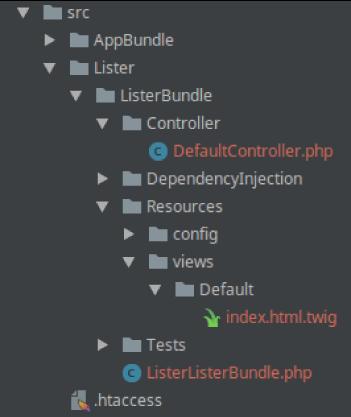
5. Mention some major competitors and alternatives to Symfony.
Some major competitors and alternatives to Symfony are listed below:
- Laminas Project
- React
- Drupal
- CodeIgniter
- Node.js
- WordPress
- Laravel PHP Framework
- CakePHP
- Liferay Digital Experience Platform (DXP)
- Yii Framework.
6. What are the web servers supported by Symfony?
Symfony supports various web servers that are given below:
- WAMP (Windows)
- LAMP (Linux)
- XAMP (Multi-platform)
- MAMP (Macintosh)
- Nginx (Multi-platform)
- Microsoft IIS (Windows)
- PHP built-in development web server (Multi-platform).
7. Does the Symfony framework support components to work with databases?
No, Symfony does not support components to work with the databases.
8. Mention some technologies in which files of routing configuration files can be written?
The files of Routing configuration can be written in the technologies such as:
- YAML
- XML
- PHP.
9. What are Descriptors in Symfony?
In Symfony, Descriptors are objects that are used to render documentation and information on the console.
10. List the Symfony framework applications?
Several Symfony framework applications are there, such as:
- Drupal 8
- Daily motion
- Thelia.
Conclusion
PHP is considered one of the most popular platforms for developing applications and websites. And among various frameworks supporting it, Symfony is one of the best application and web frameworks. It is used widely by companies across the world due to its features, especially interoperability. Therefore, a wide array of opportunities is available for Symfony Developers in the market. And so does the competition. Hence, it makes total sense to prepare beforehand and not to be left behind. And we wish this compilation of Symfony Interview Questions and Answers will take you closer to being successful.
 On-Job Support Service
On-Job Support Service
Online Work Support for your on-job roles.

Our work-support plans provide precise options as per your project tasks. Whether you are a newbie or an experienced professional seeking assistance in completing project tasks, we are here with the following plans to meet your custom needs:
- Pay Per Hour
- Pay Per Week
- Monthly
| Name | Dates | |
|---|---|---|
| Angular Training | Jan 10 to Jan 25 | View Details |
| Angular Training | Jan 13 to Jan 28 | View Details |
| Angular Training | Jan 17 to Feb 01 | View Details |
| Angular Training | Jan 20 to Feb 04 | View Details |

Viswanath is a passionate content writer of Mindmajix. He has expertise in Trending Domains like Data Science, Artificial Intelligence, Machine Learning, Blockchain, etc. His articles help the learners to get insights about the Domain. You can reach him on Linkedin






